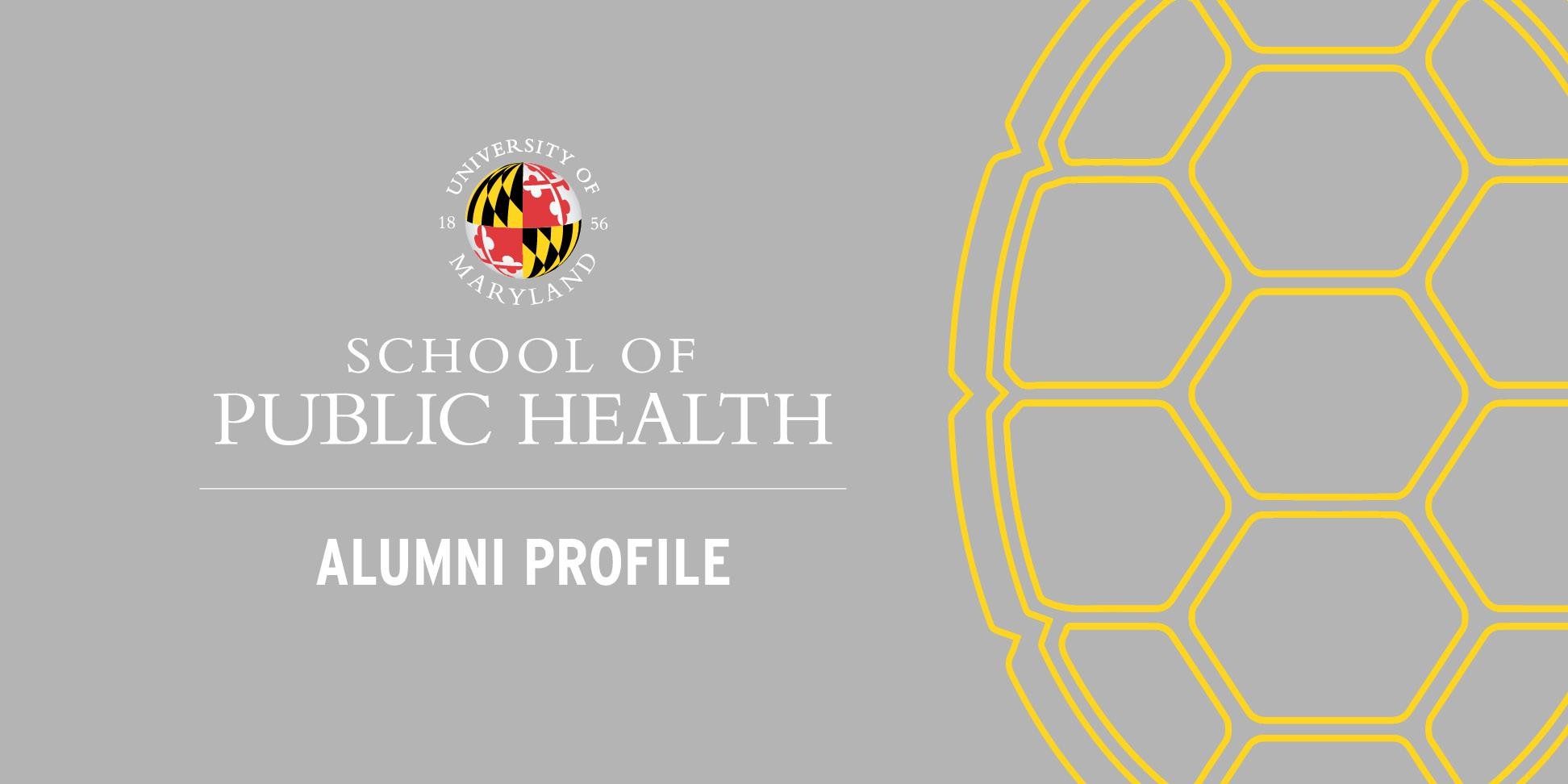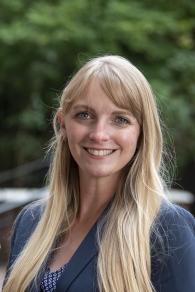

Master's in Environmental Health Alumna
Kimberly Stinchcomb (MPH ‘16)
Kimberly Stinchcomb, a master's in environmental health alumna, is working to fight the COVID-19 pandemic here in Prince George’s County.
Stinchcomb is an emergency preparedness consultant for the UMD Center for Health and Homeland Security, and is contracted to the Prince George’s County Health Department. Her job is to plan for public health emergencies like this one through trainings and exercises, outreach and grant management.
Stinchcomb received her MPH in environmental health sciences from UMD in 2016.
How has COVID-19 impacted your role?
It has completely activated everything we’ve planned for but never expected to happen. When we create these response plans, they are usually focused on a big one day event, or week long event, like a hurricane. Obviously an epidemic was considered in those plans but it hasn’t been given the focus it needs.
This is an event even if planned for, you can’t expect the level that it’s become.
There’s been a hot topic every week. When there were no cases in Maryland, we set up a call center to help people prepare. After we got our first case, we started taking action on the health department side, like getting PPE from the national stockpile and distributing it.
What are you seeing day-to-day on the front lines?
Now we are focused on the hospital surge, dealing with staff exhaustion and finding beds for all these people who are in the hospital for weeks at a time. And all of this has been happening at the emergency level. It’s an event like no other.
We’re doing a lot of learning as we go, we’re doing a lot of adjusting to needs as we go, and we’ve been ahead of the curve in getting beds ready.
We have been setting up testing centers at Fedex field, and testing 100-200 people a day, three times a week. We want everyone to come out, get tested and get results. It’s been a huge initiative in county engagement and it impacts those numbers.
What do you think is the most challenging issue we’re facing right now?
A shortage of supplies, space, beds and staff. There’s a high demand over a long period of time with low supply.
Now, there’s a requirement in Prince George’s County that everyone going to the grocery store needs to wear a mask [Editor's note: after this interview was conducted the state of Maryland implemented the mask requirement for all counties]. So we are teaching people to use their resources to make something suitable for a mask-- they just need to have some kind of covering, so we can put mask resources toward healthcare providers.
We don’t have an endless supply, and we need to stretch the supply out.
When this all ends very much depends on how people act. Even as cases go down, recovery is going to be long.
And how are you holding up? It’s the busiest I’ve ever been. I’m never off working, I’m completely available 100% of the time.
It’s a stressful situation but there’s nowhere else I’d rather be right now. I’m lucky to have a job and an income. I’m lucky to use the knowledge that I have to help us overcome and get through this.
How has your degree from Maryland helped you address these challenges?
I think back to some of the courses I took, specifically in environmental health, where I learned about the things that affect the spread of disease, like the duration and magnitude of the exposure. Classes from Amir Sapkota, Amy Sapkota and Don Milton-- I think back to them all of the time. All of this information is coming back to me even though I haven’t worked directly with it for the past couple of years.
And I think back to classes from Sacoby Wilson that were focused on social disparities-- that’s a huge issue for us right now.
People with resources are not necessarily the people we need to be reaching out to. There’s a lot of people without primary care physicians or insurance, which is a population that we are specifically focusing on testing and treating at the Fedex field. There is nowhere else for them to get that treatment and screening, and they need the same information as everyone else in order to keep themselves safe.
What’s happening is horrible but it's exciting to be able to use the information I learned and see how relevant it is in these situations.
Has anything surprised you about this pandemic and the ability of the public health/health care system to effectively respond?
The relationship we’ve built with other agencies is remarkable. This is the first event I’ve seen where people from a lot of different agencies come together on the same page and with the same end goal.
It changes everything for our work in the future. The bonds we have with these people are so valuable and important.
What do you hope for the future of the public health workforce/field? How do you think this pandemic will change public health?
I think it’s going to change everything. We are finally going to get the attention for public health emergencies that we need-- attention in the way of funding and collaboration.
This brings to light that the entire world can be impacted by a public health event-- there’s impact on the economy and in our day to day lives in a way we’ve never experienced. It’s impossible for everything to be the same after this. Life will not be the same, everything is changing.
There will be more research and more funding to understand how we could have reacted to this faster, what we could have done differently. It will be very valuable to update plans and make changes for the future.